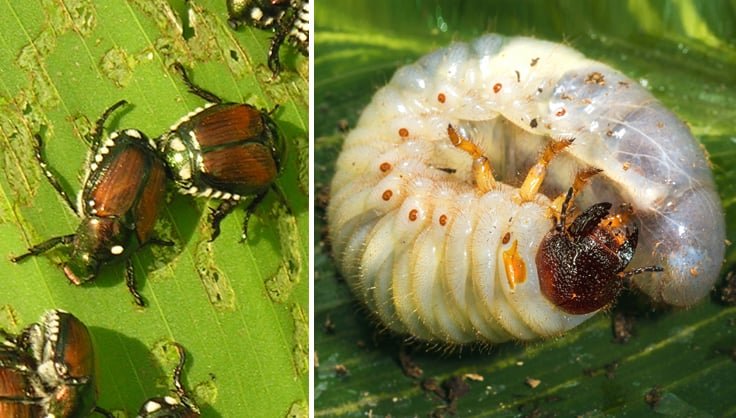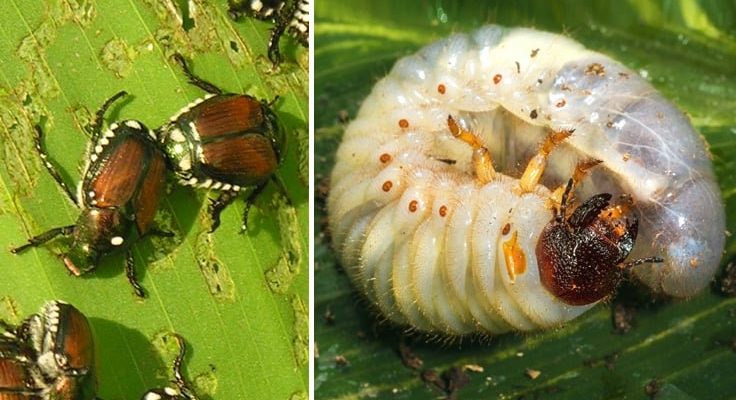
Imagine you’re at a party. There are a few people who really stand out in the crowd, but then there are those many folks who look similar and blend in. Recognizing Japanese beetle grubs is similar; once you know what you’re looking for, it becomes a lot easier to spot them among all the other “party crashers” in your soil. So, let’s dive into how you can differentiate Japanese beetle grubs from other types.
What Are Grubs, Anyway?
Before we get into the specifics of Japanese beetle grubs, let’s take a step back and talk about grubs in general. Grubs are the larval stage of various beetles and typically live underground in your lawn or garden. They can wreak havoc, munching on roots and disrupting the health of your plants.
Most grubs share a similar pearly-white color and a C-shaped body. They can be anywhere from half an inch to two inches long. You might be wondering, “What’s the big deal?” Well, knowing the difference between them can save you a lot of heartache—and a costly lawn repair bill!
Here’s a quick rundown of common types of grubs:
- Japanese Beetle Grubs: These are the troublemakers, usually found from late spring to early fall.
- June Beetle Grubs: Larger and often found after Japanese beetles, they feed mostly on grass roots.
- Masked Chafers: Similar in size, but they have a more rounded body and shorter legs.
Knowing these basics will help set the stage for a more in-depth look at Japanese beetle grubs.
Identifying Japanese Beetle Grubs
Let’s get into the nitty-gritty of identifying Japanese beetle grubs. The first thing you’ll notice about them is their shape. They typically have a C-shaped body that can be distinguished by their tan or brown head. One easy way to spot them is by their characteristic curl; they tend to tuck themselves into that cozy “C” position when disturbed.
Another tip? Look for them at a depth of about 4 to 6 inches in the soil. If you unearth some grass and see grubs that fit this description, you likely have Japanese beetles on your hands. They can be a bit sneaky, so it’s important to check your soil regularly.
Also, keep an eye out for signs in your garden. If you see patches of grass that look brown or wilted, it might be an indication of grub activity below. They’re munching away on roots, leading to a lack of nutrients and water for your plants.
Why Do Japanese Beetle Grubs Matter?
You might be asking yourself, “Why should I care about these grubs?” The truth is, Japanese beetle grubs can cause significant damage to your lawn and garden. They feed primarily on the roots of grass and other plants, which can lead to large, unsightly brown patches—definitely not the look you want for your yard.
In addition to that, their presence can attract other pests. Think of it like having a “Welcome” sign for other unwanted guests. Once those grubs start affecting your plants, it can become a vicious cycle. Healthy grass and plants help keep your garden vibrant, and grubs can turn it into a shadow of its former self.
Furthermore, understanding the lifecycle of these pests can help you prevent their growth. If you know when they’re most active, you can take action before they get out of hand.
Other Grubs: A Closer Look
While it’s crucial to recognize Japanese beetle grubs, it’s also important to know about other types of grubs that could be lurking around your yard. Each type has its quirks and possible consequences for your lawn.
For example, June beetle grubs are generally larger and usually appear in shades of white. They are often associated with lush, grassy areas but can lead to the same issues as Japanese beetle grubs. Masked chafers, on the other hand, have a more rounded body and can also be sneaky in their approach, often going unnoticed until damage becomes apparent.
To differentiate between the grubs, pay close attention to their size, shape, and the conditions of the soil where you find them. You might even consider collecting a few samples and doing a side-by-side comparison.
How to Control Japanese Beetle Grubs
If you’ve confirmed that those pesky grubs in your soil are indeed Japanese beetle grubs, you might be wondering how to deal with them. Fortunately, there are a number of methods you can use to get them under control.
- Beneficial Nematodes: These microscopic worms can help control grub populations by targeting them in the soil.
- Milky Spore: A natural treatment that specifically targets Japanese beetle grubs and can be effective over time.
- Cultural Practices: Maintaining a healthy lawn—like proper watering and fertilization—can help resist grub damage.
You’ll want to be proactive, so checking your lawn regularly is key. If you spot signs of grubs, applying these treatments early can make a significant difference.
Seasonal Timing for Grub Control
Knowing when Japanese beetle grubs are most active can really help you in your battle against them. Typically, you’ll find these grubs from late summer into early fall. This is the time they’re actively feeding on roots and causing the most damage.
During this period, make regular checks in your soil. If you see them, it’s time to swing into action. You can implement the methods we talked about earlier, but don’t forget that timing is everything when it comes to pest control. Catching them early gives you the upper hand.
As the seasons change towards late fall, the grubs begin to burrow deeper into the ground, preparing for winter. This is your chance to prepare your lawn for the next year, ensuring they don’t return with a vengeance when warm weather rolls back around.
In sum, recognizing and dealing with Japanese beetle grubs doesn’t have to be a guessing game. With a bit of knowledge, you can confidently identify these pests and take action before they wreak havoc in your yard. Remember that prevention is key, and regular checks can save you a lot of trouble down the line.
So, the next time you’re out in your garden, keep an eye on the soil and know what you’re looking for. Grubs may seem small, but their impact can be huge. When you can differentiate between Japanese beetle grubs and others, you’re one step closer to maintaining a lush, healthy garden. Happy gardening!

